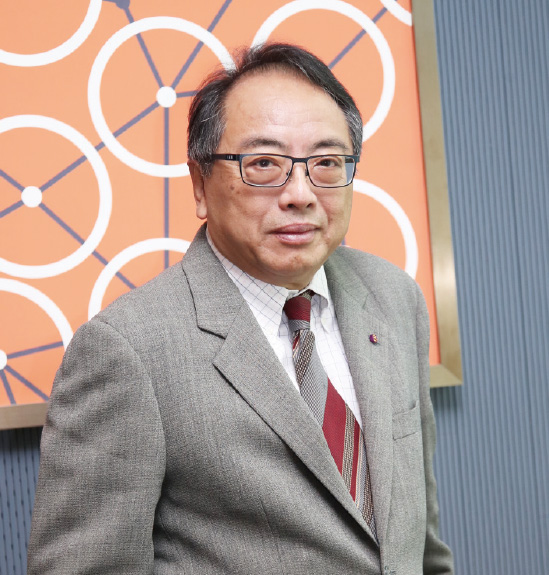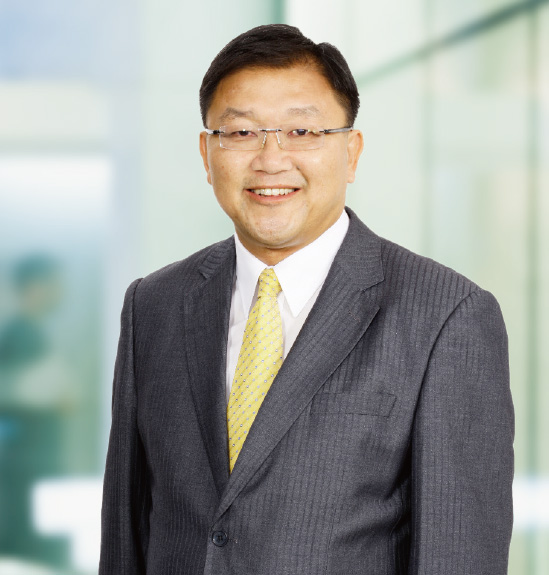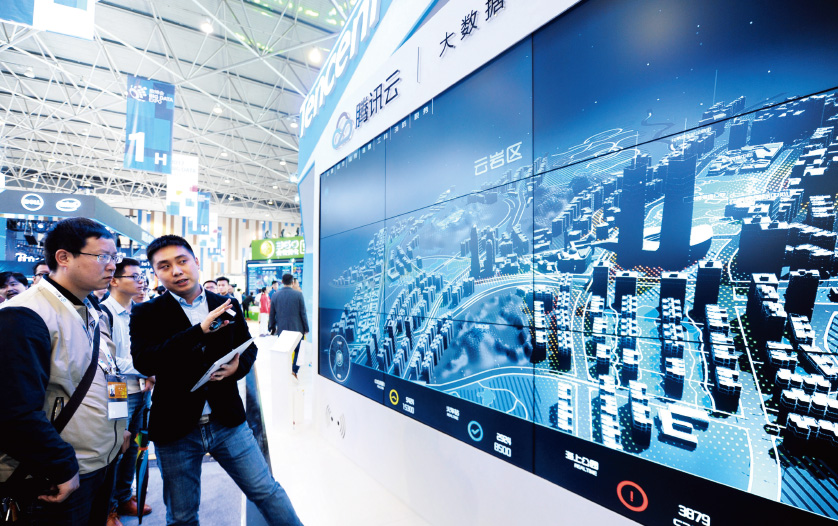Hong Kong and Shenzhen have complementary strengths in jointly promoting innovation and technology (I&T) industries. Home to many renowned universities in the region, Hong Kong is no less successful in technological development and achievements as well as talent training, while Shenzhen is the Mainland’s capital of innovation and creativity. Hence, Hong Kong-Shenzhen cooperation in the field of I&T is a win-win situation.

Tsui Lap-chee: Hong Kong and Shenzhen are a Natural Fit for I&T Cooperation
The Central Government is keen to build the Greater Bay Area into an international I&T hub and through Hong Kong, Macao, Guangzhou and Shenzhen as the core engines for regional development, drive in-depth cooperation in areas such as talent exchange, entrepreneurship incubation, research facilities, I&T financing and transformation of results. Tsui Lap-chee, Founding President of the Hong Kong Academy of Sciences, believes that Hong Kong should leverage its strengths in upstream research to complement Shenzhen’s strengths as a high-tech manufacturing hub in order to take this key opportunity to contribute to Hong Kong’s all-round development in scientific research.
Leveraging business sectors to help translate upstream research
 Hong Kong’s world-class universities, which boast top scientific researchers from home and abroad, have accumulated extensive experience in upstream and basic R&D over the years. Tsui noted that one of Hong Kong’s major strengths traditionally is upstream R&D, which refers to research conducted by universities and corporate R&D institutions.
Hong Kong’s world-class universities, which boast top scientific researchers from home and abroad, have accumulated extensive experience in upstream and basic R&D over the years. Tsui noted that one of Hong Kong’s major strengths traditionally is upstream R&D, which refers to research conducted by universities and corporate R&D institutions.
However, Hong Kong still needs to work hard in translating upstream research into practical applications, which requires mid-stream technology transfer. Tsui explained, “In recent years, the University Grants Committee (UGC) has regarded the number of academic papers published by university professors as a key performance indicator for promotion, resulting in a lot of research remaining at a theoretical level. Recently, however, the UGC has progressively revised the relevant performance indicators in order to help universities translate scientific research into applications.”
As for downstream product development, Tsui looks for the academic community stepping up cooperation with the business sectors in order to improve effectiveness, “After technology transfer, the downstream implementation stage is no longer suitable for professors to follow up, as they are more accustomed to pursuing the perfect solution in their academic research work. In contrast, business operations need to improve continuously. Therefore, experienced business sectors should takeover to translate more outstanding research results into application technologies or products that are profitable and beneficial to people.”
Various parties doing their part to drive technology innovation
Tsui pointed out that in order to be successful, technology innovation must have three links, i.e. upstream, midstream and downstream, which should be covered by institutions and universities, the government and the business sectors in close cooperation and interaction with each other. Tsui added that as many cities in the Greater Bay Area have reached a sizeable scale and achievements in downstream product development, Hong Kong should leverage its strengths in upstream research to strengthen collaboration with other cities, while learning from the experience to build on its strengths to drive technology innovation.
Hong Kong-Shenzhen cooperation for mutual benefits
 Not so long ago, the relationship between Hong Kong and Shenzhen was such that the former served as the storefront while the latter was the factory at the back. Today, Shenzhen has become a hub of I&T industries boasting an abundance of IT talents. Tsui stressed that Hong Kong should take the development opportunities of the Greater Bay Area and partner with Shenzhen for technology transfer of Hong Kong universities’ scientific research, combining Shenzhen’s high-tech production capabilities to create a win-win situation.
Not so long ago, the relationship between Hong Kong and Shenzhen was such that the former served as the storefront while the latter was the factory at the back. Today, Shenzhen has become a hub of I&T industries boasting an abundance of IT talents. Tsui stressed that Hong Kong should take the development opportunities of the Greater Bay Area and partner with Shenzhen for technology transfer of Hong Kong universities’ scientific research, combining Shenzhen’s high-tech production capabilities to create a win-win situation.
“Hong Kong is strong in upstream R&D and can also serve as an investment financing platform, while Shenzhen has been excellent in developing I&T industries in recent years, performing particularly well in midstream and downstream commercialisation. Therefore, through the platform set up in the Greater Bay Area, the two places are a natural fit for I&T development.”
In addition, the Hong Kong-Shenzhen Innovation and Technology Park in the Lok Ma Chau Loop is not only Hong Kong’s largest I&T platform, but also a key facility for Hong Kong-Mainland collaboration on I&T research. Tsui revealed that he had proposed to the Chief Executive for different institutions and universities to team up to set up a biomedical research centre there. Relevant preparations are currently underway. “Academics at the centre will focus on preliminary R&D and work with Shenzhen and other neighbouring cities in the Greater Bay Area to translate scientific research results into products through local manufacturing facilities, further achieving mutual benefits and win-win outcomes.”

Wong Kam-fai: Shenzhen and Hong Kong are Aligned for I&T Development
Despite the HKSAR Government’s strong efforts in driving innovation and technology (I&T) development in recent years, the results are still not adequate as the Hong Kong economy has always focused on financial and professional services. With the Central Government keen to build the Greater Bay Area into an international I&T hub, Hong Kong’s I&T industries could upgrade and restructure through complementarity of strengths with Shenzhen and other Greater Bay Area cities.
I&T policies shifted to drive downstream development
 In recent years, the HKSAR government has invested heavily in the field of scientific research start-ups. Wong Kam-fai, Associate Dean (External Affairs) of the Faculty of Engineering and Director of the Centre for Innovation and Technology at the Chinese University of Hong Kong, noted that since its establishment in 2015, the Innovation and Technology Bureau’s (ITB) policies have undergone a major shift towards driving downstream industries in order to stimulate innovative scientific research.
In recent years, the HKSAR government has invested heavily in the field of scientific research start-ups. Wong Kam-fai, Associate Dean (External Affairs) of the Faculty of Engineering and Director of the Centre for Innovation and Technology at the Chinese University of Hong Kong, noted that since its establishment in 2015, the Innovation and Technology Bureau’s (ITB) policies have undergone a major shift towards driving downstream industries in order to stimulate innovative scientific research.
Wong said that the Government’s past focus of resources on universities for research had not produced satisfactory results, “The previous idea was that if the scientific research results are appealing, the business sectors will be attracted to invest and use them. However, we have learned from over a decade of experience that this is not enough.”
Wong noted that the Government has rolled out several support measures in recent years to further boost the development of downstream industries, including allocating funds to promote entrepreneurship and launching the technology voucher programme to incentivise businesses to use innovative technologies, and encourage government departments to incorporate innovation elements in tendering processes, which are beneficial to both businesses and technology providers. In addition, as a percentage of Hong Kong’s GDP, I&T industries have increased from 0.76% to 1.5% in recent years, which, while the increase was smaller than that of neighbouring cities such as Shenzhen and Guangzhou, was a big step forward.
Lok Ma Chau Loop provides an ideal I&T platform
With building an international I&T hub now a major goal of Greater Bay Area cities, Shenzhen and Guangzhou, just off the coast of Hong Kong, have taken great strides in developing I&T and manufacturing industries. In Wong’s view, Hong Kong has mutually beneficial and complementary relationships with Shenzhen, Guangzhou and other Greater Bay Area cities.
The Outline Development Plan for the Guangdong-Hong Kong-Macao Greater Bay Area mentioned to give impetus to Hong Kong and Shenzhen’s joint development of the Innovation and Technology Park in the Lok Ma Chau Loop. According Wong, the Lok Ma Chau Loop brings the physical distance between the three places closer, providing an ideal operating platform for the entire innovative scientific research ecology. “Currently, when Hong Kong needs to turn its research outcomes into practical applications, it often requires Shenzhen’s talents to develop prototypes and conduct development tests. However, as I see it, many people now cut corners, getting Shenzhen’s talents to work in Hong Kong on the “Individual Visit Scheme” in order to avoid the inconvenience of applying for work visas. In the future, as the Lok Ma Chau Loop can allow people from different places to work there, cooperation will be more convenient and faster.”
Ecosystem spanning from research through to production
Wong said that Guangzhou, Shenzhen and Hong Kong can form an ecosystem spanning from research through to production, “Shenzhen is strong in applied scientific research and good at nurturing start-ups; Guangzhou is a distribution hub for products nationwide and good at manufacturing; Hong Kong has first-rate institutions and universities and is excellent in basic research. Therefore, the three places can complement each other.”
“As a distribution hub for products made nationwide, Guangzhou can help launch I&T products for sale across the country; Shenzhen can nurture start-ups; and Hong Kong can enable technology products to get into international markets.” In Wong’s view, Hong Kong, Shenzhen and Guangzhou are like three checkpoints throughout the R&D process. First, Hong Kong develops a technology, then Shenzhen tests and verifies it repeatedly and turns the technology into a product, and finally, Guangzhou manufactures the product in bulk. Besides cooperating with each other, the three places can also provide a downstream outlet for turning technologies into products and applications.




